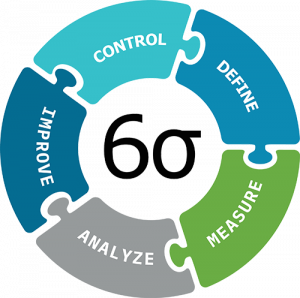In the nuanced world of online market research, where deadlines are tight and budgets tighter, finding cost-saving solutions wherever you can is paramount. The Six Sigma methodology, with its emphasis on process improvement and efficiency, provides a valuable framework to examine spend, particularly in the realm of high-volume quantitative studies. Interestingly, while Six Sigma is often associated with time and large-scale manufacturing processes, its principles are equally applicable and beneficial in the context of online market research costs.
One of the most powerful aspects of Six Sigma is its focus on making incremental improvements to high-frequency tasks. We can draw a parallel using cost instead of time and online surveys instead of manufacturing. This means prioritizing cost enhancements in processes that occur thousands of times over those that happen only occasionally.
The Impact of Large Sample Size on Costs
A common misconception is that significant cost savings are only achievable through streamlining large, infrequent (at least for the purposes of this topic) tasks such as survey programming. There are cost savings to be had there but that’s another blog! 😊Six Sigma teaches us that another major opportunity for cost reduction and efficiency lies in optimizing the small, repetitive tasks that, though seemingly inexpensive on their own, collectively represent a substantial portion of the total project cost. So, let’s home in on the small task that, cumulatively, consumes vast amounts of your research budget, the survey complete.
Understanding the True Cost Drivers
Six Sigma’s DMAIC (Define, Measure, Analyze, Improve, Control) framework can be most effectively applied to identify inefficiencies and drive improvements. Consider that a survey complete in most survey platforms costs anywhere from $0.40-$1.00. If your study is getting 10,000 completes per month you are probably closer to the $0.40 rate, but that is still $4000 monthly. How can we improve and control this cost?

Embracing the Marginal Gains Philosophy
By applying the marginal gains approach, we can significantly reduce the overall cost. I wish it were more complicated so this blog could be longer. To create significant cost savings, you need to find the item that has the highest value based on frequency X cost and make marginal gains in that area. Reducing the completion cost of a survey by $0.20 could create significant cost savings ($2000 per month using the example above). Additionally, on trackers, this is usually multiplied again by 12 months.
Investing In Cost Efficiency for Long Term Success
This is where the rubber meets the road. Six Sigma methodologies only work when the evaluation and data is used to implement a solution. When searching for solutions for your survey programming and hosting, you must take care to look at the programming and hosting.
For the survey programming, you should find a provider that can not only do the job but also work with your team to create efficiencies on the front end, from document to online instrument. It is also helpful when they can create efficiencies on the backend (the data transfer and processing) where a good portion of the work is also done. Again, that can be, and will be, another blog. This blog has been focused on hosting, the forgotten side of programming and hosting recipe.
Focusing on the hosting can create great gains in cost. When evaluating hosting, you need to ensure that the system can handle the demand that you are putting on it for starters. After that, because it can be the biggest multiplier of cost, the hosting cost can be low hanging fruit in your quest for cost savings on your high-volume research studies. Applying Six Sigma to programming and hosting evaluations can help you find the solutions that are most impactful to your budget.
